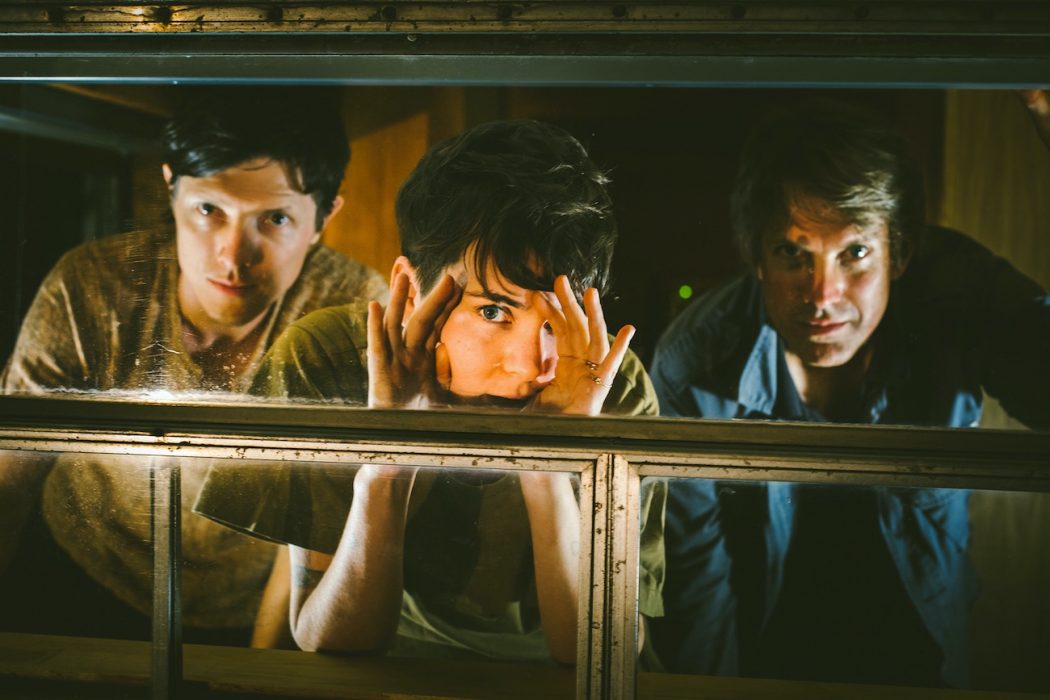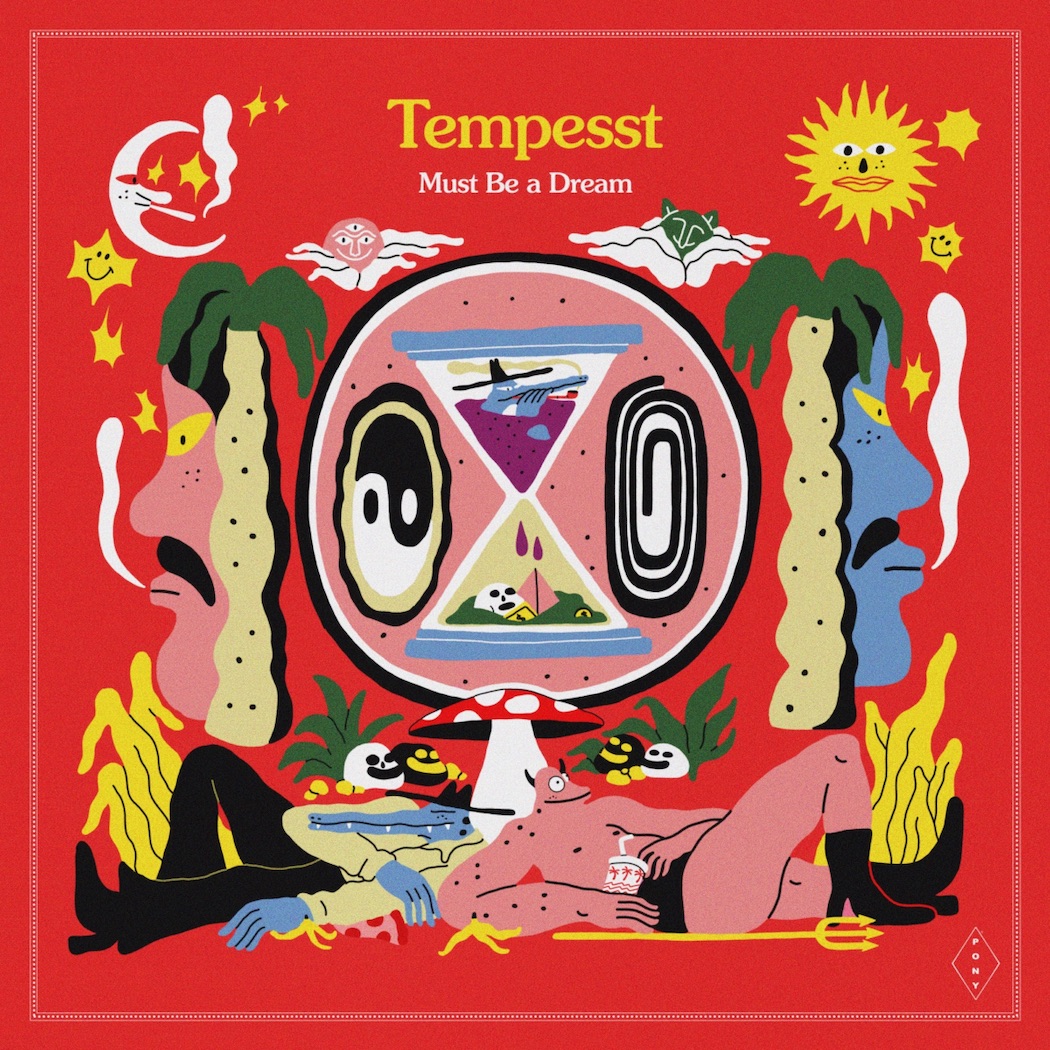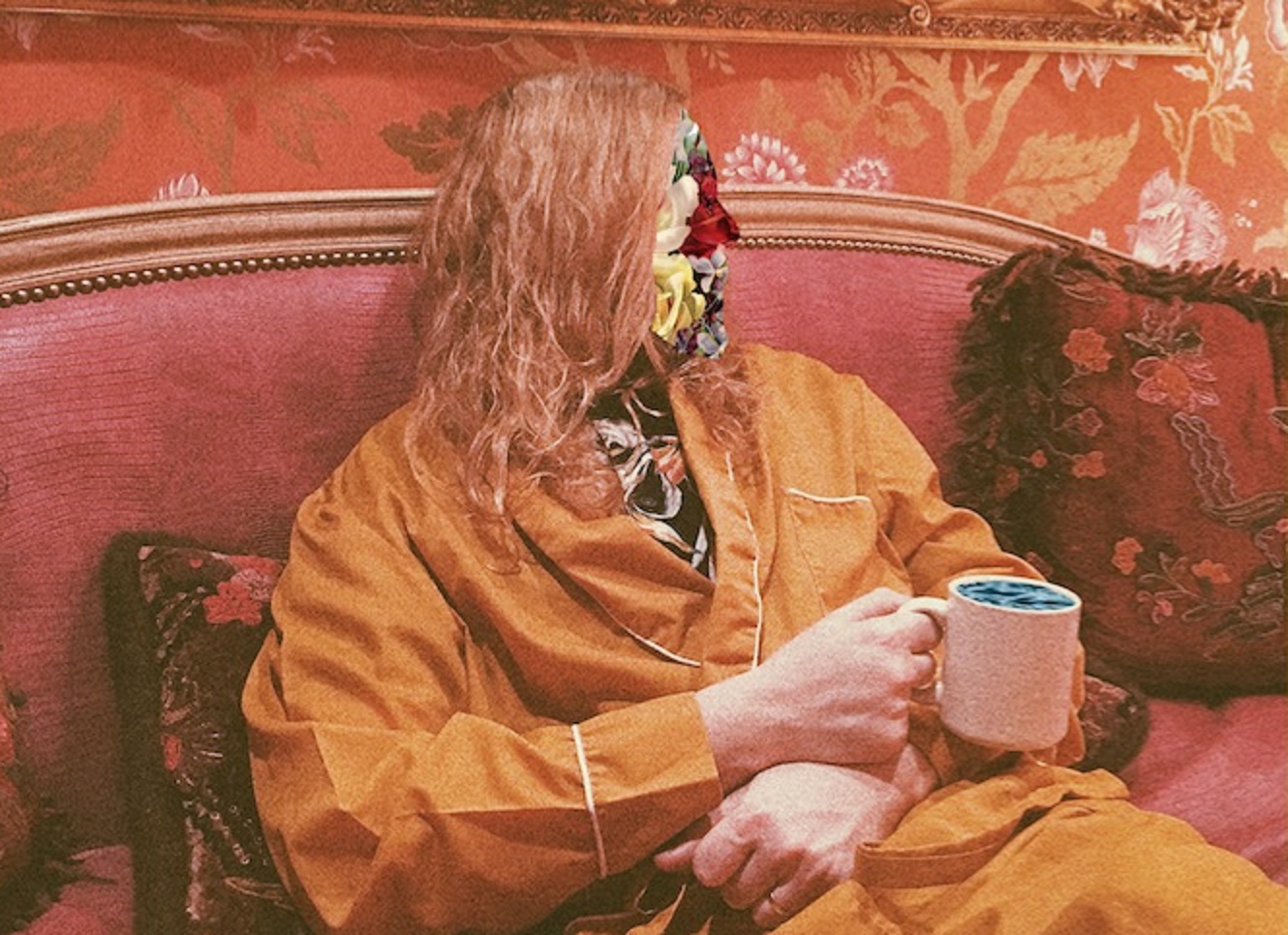Uncanny yet tranquil, Loma’s unlikely sophomore effort ‘Don’t Shy Away’ is an oasis of joy in a world verging on everything. Lead singer Emily Cross sat down with Atwood Magazine to answer questions on the album’s formation.
Stream: “Homing” – Loma
It’s actually interesting once you start to look at things. And then you realize that that “thing” is someone’s whole life.
Someone got to paid to choose that Papyrus font.
(laughs) Yeah! I’m always taking about Papyrus! Always!
Laughter cracked across the Zoom call. It was a Saturday afternoon in England and Emily Cross was sitting in her car for an interview with Atwood Magazine. I was on the other end, and we were both laughing deliriously about the ubiquity of certain fonts.
Cross is one of a trifecta called Loma, a band on the label Sub Pop and possibly — should be — the worst kept secret in independent music. Loma is a band of three people: Dan Duszynski, producer, Jonathan Meiburg, guitarist, and Emily Cross, vocalist; their second record is called Don’t Shy Away, and it too should be a poorly kept secret. Don’t Shy Away on October 23rd, exactly thirteen days after I have written this sentence. This is unusual as, by all accounts, every member of Loma thought their debut would also be their only. Had it all gone to ad hoc plan, Sub Pop’s SPF 30 celebration would have capped off the ad hoc plan; “We thought, why not stop here?” asked Cross on their second album’s press release. A finite end to an enigmatic perfect first record. Unsure enough, Meiburg and Duszynski were soon back in the studio together unraveling new sonic for a follow-up. Cross joined them, and in February of the new year, a new record was well on its way.

With only a month to go before release, I had a chance to talk and, er, email the trio different questions about the nature of their music and how they make it click.
From the email exchange, Duszynski switched between songwriting metaphors; first house-building foundation, rough work, noise, detail, finish—heavy emphasis on the finish—and then a Ouija board simile: “everyone pushing the dial towards something together.” The press release even mentions a democratic process in which “no one wears the crown.” I like to think it’s still better than being lobbed guitar riffs from farcical aquatic ceremonies.
Meiburg chimed in with a lean remark: “Dan is the judge, I’m the jury, Emily’s the executioner,” highlighting Duszynski and Cross’ different orientations to music.
Meiburg plays frontman role for Shearwater. Cross, a Doula who assists “living funerals” by trade, records music as if a happy coincidence. Duszynski, a working engineer, runs his own independent recording studio in central Texas, and previously assisted her sophomore slowestcore album, Cross Record. All three are now dispersed across a Texas to Cornwall axis, and yet their second record is just as good as the first.
We do find common ground in the pleasure of sound. We’ll just sit in the studio and laugh at a cool sound that we have.
— —
:: stream/purchase Don’t Shy Away here ::
Stream: ‘Don’t Shy Away’ – Loma
A CONVERSATION WITH LOMA
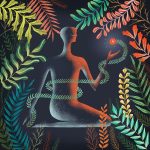
Atwood Magazine: Your previous solo effort, Cross Record, was sort of an oxymoron of a slowcore record as it was simultaneously spares yet dense, were there any lessons you took from that record to this new Loma record, Don’t Shy Away?
Emily Cross: Probably, I’m me and I have certain sensibilities and I bring them to the table when we’re collaborating. But I did write the first song on the record, “I Fix My Gaze,” and Dan [Duszynski] reworked it with me and I put clarinet on it. I wrote that song in 2016, so that was an older one that we reworked.
I was actually on tour for Cross Record when [Dan Duszynski and Johnathan Meiburg] started working on the new Loma record. So for a lot of the groundwork I wasn’t actually there. I came in after I got back from tour and they had recorded a whole bunch of stuff and then I kind of listened and told them what I was responding well to and… we worked on the ones we all felt good about at the time and did vocals later.
Well that speaks to your origins, because Jonathan comes from Shearwater, so how does his origin as a rock star influence Loma? What is his influence on the band?
Cross: I would say it’s huge. He writes quite a lot for the band and I would say I play more of a producer role in the band and of course I’m a vocalist but he comes up with most of the skeleton of the song and then we take things away and mold them.
And actually both him and Dan did work in combination for this one pretty evenly. There was a lot of programming with the Ableton Live but I think it’s interesting because we all push each other in different directions because we do come such different places musically. I’m always trying to make [a piece] less of a rock song and Dan’s trying to make it more of a pop rock song… and then we get to a point where it’s all a combination of that. And we do find common ground in the pleasure of sound, we’ll just sit in the studio and laugh at a cool sound that we have and then we have to figure out if it’s cool that it’s in there or does it have to be in there because it’s serving a function. That’s when it gets hard, because you don’t know what to delete.
Your music does have a lot of found sound, was there any particular sound you really enjoyed?
Cross: I just enjoyed that their was a lot of clarinet on the record. I selfishly had a lot of fun with that. I know that there was this one sound on which I lost [the argument]: the boys came up with this idea of sampling a cicada—and I love the sound of a cicada—but they turned into a “shaker” sound like a ch-ch and I hated it <laughs> thought it was so stupid. And I was begging them to delete it, <laughs> but I lost. It’s whatever. They liked that sound quite a lot.
I also loved how we brought in the horn section for this one, that’s probably my favourite part of the whole record… when they come in guns blazing, I just love that so much.
Was there a particular song from this record that you enjoyed making the most?
Cross: I don’t know if I have a favourite. I did write “I Fix My Gaze” so I have a particular connection that one but I would say the most fun one was “Elliptical Days” because that one would get stuck in my head, it was fun to dance to and we did some group vocals that were very fun. It had a bunch of moving parts which were fun to weave together.
I also like “Thorn” cuz it has part of my podcast in it… Jonathan and Dan took a piece of my podcast and put it in this song and I didn’t know that they did this, but they created this weird soundscape around part of my podcast and thought it was so funny and we got kind of a strange song out of it.
— —
— — — —
— —
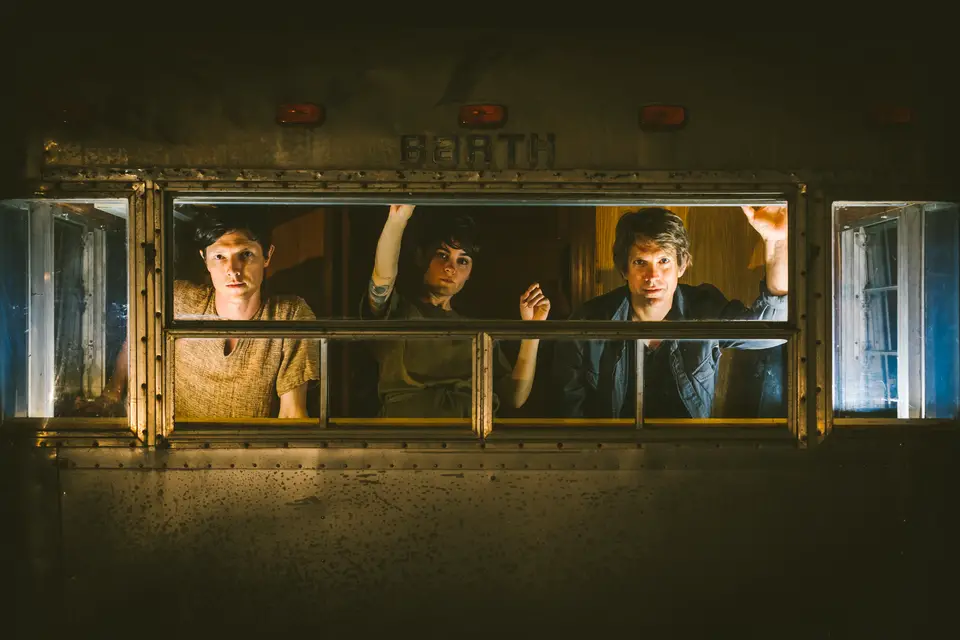
— —
— — — —
— —
Emily Cross was explaining her podcast, What I’m Looking At, and how fellow bandmates Dan Duszynski and Jonathan Meiburg had sampled their lead singer’s own voice on a forbidding piece titled “Thorn.” The track serves as a holotype for the rest of the record; a Gregorian, chamber, electroacoustic piece inflecting an abandoned manse and an enchanted rose. Cross sings of an undertow and one prowls the lower frequencies, threatening to pull audiences under. The sonic is not drastically from their folktronica debut, but key instrumentation is different.
There are some common threads: there are no concerns for whether music is too experimental for audiences and they share a love for the weird and bizarre sounds. Which explains a good deal about Don’t Shy Away. Loma may not qualify for popular, they certainly qualify for alternative. The focus is on something good no matter the orthodoxy. Cross, Duszynski and Meiburg evade traditional or stylistic hang-ups by understanding the fluid nature of their partnership and the fundamental schemes of their sonic: spare and sparse arrangements. A tension strung tight, a vocal note running meter-by-meter, Loma unveil their synthetic compound of interests in electronica, folk, chamber, et al, taut yet light, vulnerable yet guarded. Is this chambertronica? Or is that just electroacoustic? And is this world beat, or can we just call it alternative folk? From Duszynski’s standpoint “Genre is so loosely defined in 2020, especially when all the music ever made is available to anyone at any time.”Don’t Shy Away doesn’t simply refine the theory that was the first long-player, but makes for an appendix; an essay on principles translating between whole genres and philosophies. A sort of Jeet Kune Do for the electroacoustic artist.
Pinning the mood of a Loma record is just as notoriously difficult a task; conventional or haphazard listening sessions might surmise melancholy or sadness as primary emotions behind the music but it misses an important aspect: the environment in which it is received. Duszynski confirms as much, writing “The emotions are always up to the listener. We try to pay attention to whether or not we are generally feeling an emotion- any emotion, while we make the songs. If the answer is no, we usually discard that piece.”
Emotion and mood then, are malleable. Environment became key. And the environment was on fire. There, Loma fit well into a subset of artists I identify with a nonspecific end of the world, Mogwai, Godspeed You! Black Emperor, Nick Cave, PJ Harvey, IDLES and some Cat Power for emphasis. As a bid for research Loma’s debut turned with Mogwai’s Rock Action as the pioneer sky transformed from blue to orange to perpetual a grey, as the air became a campfire and the wind became charcoal and the sun bled and the moon no more was. Melancholy became inadequate a descriptor in Portland, Oregon. Okay no longer meant okay. Happiness and hope were rain, and it did not rain. But the melodies and hooks were water and shade. A salve of phenomenological importance. And where the first record was apocalypse, the second was an aftermath.
Uncanny yet tranquil.
What delivers much of this sentiment is that central tension of minimalist tendencies. What better to intimate a quiet wasteland but a dearth of sound; notes and chords and elements that pace their music slowly and in minor key, dilating the space of each listen and adding weight to a quivering koto, a shaking bass or a Gregorian choir. I once heard minimalist music is all about the notes you don’t play. Grosso modo, yes, kind of. It’s about the when and the where these notes are to be played, be it a twisted trumpet or a slippery note. This is what transforms the mundane into a landmark which waits for Godot, ambient soundscape or no.
Atwood Magazine: Considering that your last solo record was experimental and considering that even Loma is an experimental band—especially now that you’ve collaborated with Brian Eno on Don’t Shy Away do you think there’s a commercial purpose for the experimental record?
Cross: I don’t usually think of music as for a commercial purpose. Of course, we’re on a record label which automatically, uh, means that it will go into production if [Sub Pop] accept it and like it and then be sold to people, but we don’t go into thinking how can we make this the most commercially viable. That being said, it’s nice for people to like your music. I don’t think we have that attitude of commercial viability; we just do what we want and hopefully people like it.
That seems to be a common thread with most musicians… unconcerned with the image of their music and more concerned with how they want it to sound.
Cross: I would be ingenuousness if I said we didn’t… of course we want people to enjoy it and… responding well to us sharing music, but I don’t think that’s the point. When we’re working on it we’re also thinking about visual aspects of it at the same time. We often in the studio are speaking about music in a visual way or a way that’s strictly musical.
When we’re working on it, we’re also thinking about visual aspects of it at the same time. We often in the studio are speaking about music in a visual way or a way that’s strictly musical.
I think that’s kind of funny because most of the time I’m writing about the music, I’m not thinking about the chords so much as about what they do. What is the synergy between the art and your music, do you use, the music to inspire your art, the art to inspire your music, or do they come naturally together?
Cross: I think [the last] one, it’s all happening at one time. Maybe something we’re doing with music gives me an idea visually or vice versa. It’s all kind of in the same brain together.
All just swirling around.
Cross: Yeah, like a good soup!
The game-changer was the free jazz on “Ocotillo.” Who was that, who made that sound, who were playing those instruments?
Cross: <laughs> I was playing a lot of it. I was playing that clarinet, wailing. We also had someone playing saxophone. Honestly, I just love playing the clarinet in very abrasive ways and any chance I get to do that, I’m fully into it. We all love jazz—me, Jonathan and Dan love jazz—we’re inspired by some of it but really it’s just seeing what kind of fun sounds come out of those instruments and not following any rules and… for me, expressing myself on clarinet like that because it’s so grimey and gritty and scary sounding.
I think it’s interesting because your music is not simple music. And because your music sounds complex, people would want to assume that the emotions are more complex, is that true, do you think that the emotions are more complex or are the emotions simple and Loma are trying to display them in a nuanced way?
Cross: It’s funny, I don’t think our music is particularly complex sounding, I think it does sound quite simple and I don’t know if the emotions are complex. I don’t write a lot of the lyrics… Jonathan writes most of the lyrics and he is an extremely smart person.
There was this one word I was singing, “kimberlite pipe” and I was like “What the hell is a kimberlite pipe?” And he went off on this long explanation of what a kimberlite pipe was and a personal anecdote along with it. So in that way, he doesn’t intentionally create complex emotional or lyrical content, but it just is because he is that way.
I think the short answer is most feelings and emotions are complex anyways, maybe in that way it is complex but to me it doesn’t necessarily sound complex.
— —
— — — —
— —
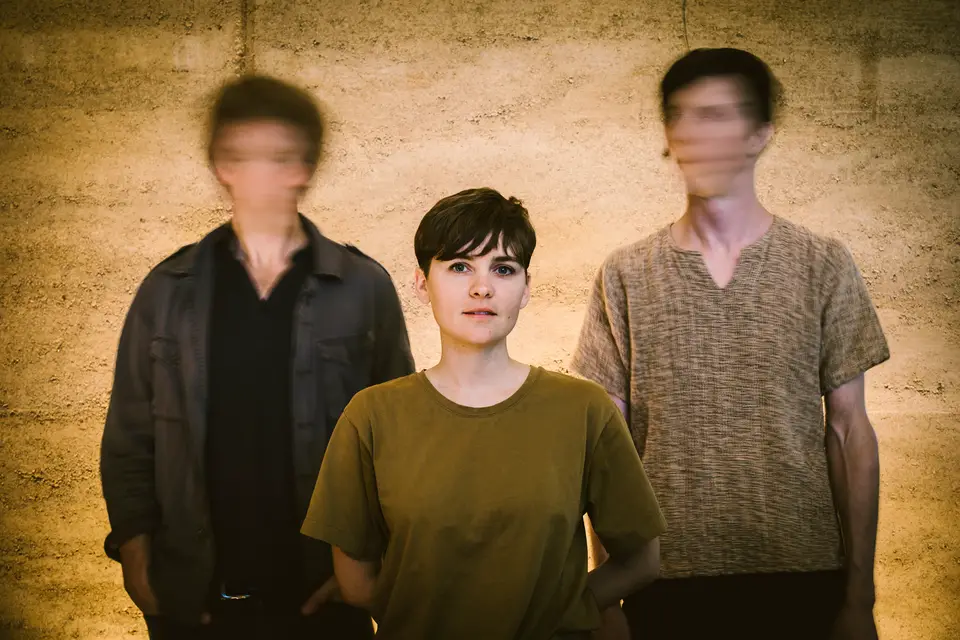
— —
— — — —
— —
The horns on “Ocotillo” are only the tip of the iceberg, however, for a group with a history of sampling/inserting found sounds into their music be it panting canids (“Sundogs”) or awakened cicadas (“Blue Rainbow”), Don’t Shy Away features more chamber from classical violin to choir vocals to the fae Koto. Cross’ clarinet is a snake charming, weaving little thing—it sneaks between the horn section and Meiburg’s own trumpet. Whatever guff he gives for quality or lack thereof only translates directly into punk. Meiburg’s support role doesn’t simply end at horns, guitars or co-production either, he’s the band’s primary lyricist, submitting pages of lyrics for Cross’ consideration. They might discuss the form and function of a particular phrase and replace it. The words are porous until Cross sings them and become wind. They speak of betrayal and fear, heavy stones and kimblerlite pipes, houses and reflections, blue rainbows and changing colours.
“The lyrics flow out of the sound of the tracks, out of the things we’re all thinking and talking about, and out of a sense of what it would make sense for Emily to sing. I’d never written words for someone else before we started Loma, so it’s been a really interesting challenge.” Jonathan Meiburg details. Once again, a sense of the band pushing together on a Ouija board. Per Cross, this non-executive manner of creative decision-making is what led to the creation of the title and main refrain for “Blue Rainbow.”
It all pays off into “Half Silences,” which serves as the big dance number and an immediate call back to the post-apocalyptic folktronica of their debut.
The instrumentation is rather simple: there’s a guitar strumming maybe three chords, another rocking back and forth on notes, with a bass mimic and drums playing pacer—Duszynski’s a relay runner again—while synths chime a siren song for the night crawler, for driving late at night, be it through the city or the Painted Desert. Cross’ voice is on full display as she sings the refrain, “I generate light/ Generate heat/ Generate breathing,” her voice deep yet light, a gentle rain from a dark cloud. Cat Power’s voice fries on a tin roof, Kate Bush’s throat warbles on wind, Emily Cross’ dives into the deep end of each note and the song comes to a succinct end; like two laps around a track. It’s the perfect Loma cut, slicing between the lines of apocalypse and aftermath, and another of many to showcase Cross, Duszynski and Meiburg’s alchemy with genre, instrumentation and emotion. The fact that this record not only works soundly by its own right but also in consistency with its unique predecessor is perhaps, Duszynski and Meiburg’s greatest achievement on Don’t Shy Away.
And when the record seems to come to end by its eponymous track, in enters a personal hero for Loma, and frankly any electronic musician with any sense.
It’s not very often a new band plays on repeat in Brian Eno’s home. Brian Eno actually name dropped Loma for “Black Willow.” Obviously this called for a collaboration. Emails were sent; Duszynski shared the bare-bones of a million other cuts, Eno filled out the one he thought was best; “Homing.” It’s a twinkling thing, almost every synth twinkles in the forefront and those that don’t shimmer in the background as a mirage. One even resounds like a bell. Cross continues to light a beacon. Perhaps its placement strikes as weird, as its position after a denouement implies an epilogue. Then again, when this album sounds so much more serene than its predecessor, what better than an epilogue to imply hope.
By the debut’s end, the trio sounded still parched, ever hungry and roaming a West that was still Wild with a guitar and a synthesizer. By the end of Don’t Shy Away, Loma has found the oasis, as beautiful and natural a Cathedral as any, one that houses jazz and chamber and folk in equal measure.
One made resplendent by three.
Atwood Magazine: Brian Eno’s collaboration — and fandom — came out of nowhere. What was it like to have an Eno soundscape to work with?
Cross: We were communicating with his manager and it was obviously an extreme honor to have him work on something of ours. We were freaking out. We had sent him multiple songs to produce, essentially, but… he picked “Homing” to add to. We didn’t actually make this song based on something he made us; we actually gave him songs we had already fleshed out.
— —
:: stream/purchase Don’t Shy Away here ::
— — — —

Connect to Loma on
Facebook, Twitter, Instagram
Discover new music on Atwood Magazine
? © Bryan C. Parker cover art © Lisa Cline design © Dusty Summers
:: Stream Loma ::

